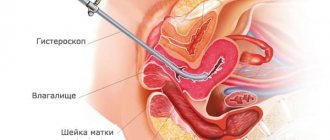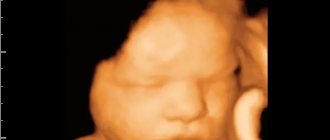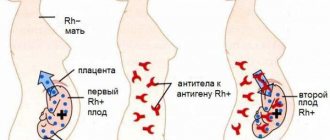The perinatal medicine literature includes several potentially conflicting terms and concepts related to intrauterine size and fetal growth. In this article, the parameters of the physical development of the fetus are examined from an obstetric point of view.
You will learn about the physiological mechanisms that determine developmental opportunities, risk factors for abnormalities, diagnostic and prognostic problems associated with limited and excessive development of the baby during the fetal period of pregnancy.
What is the fetal period and why does it need to be studied?
The content of the article
The period between the 3rd and 9th month (until the end of intrauterine development) is called fetal. At this time, tissues and organs mature, so the fetus grows quickly. Fetal size and growth trajectory of the fetus are important indicators of the baby’s health. They are studied using standards developed by obstetricians and gynecologists.
Modern doctors insist that significant deviations from average parameters can clearly indicate pathologies of child development. During the fetal period, developmental defects associated with deformations and tissue destruction caused by infections, injuries and other factors are clearly identified.
Detected defects may be insignificant or, on the contrary, significantly affect the child’s health in the future. Therefore, all three screenings during pregnancy include a mandatory study of the height, weight and other characteristics of the fetus.
Causes of pathology
Factors leading to fetal hypertrophy are conventionally classified into groups.
Social status of the mother and her lifestyle:
- Alcohol abuse;
- Smoking;
- Age;
- Prolonged stay in a state of stress;
- Harmful professions;
- Abuse of diets prohibited during pregnancy.
Features of the obstetric history: gynecological diseases, anomalies of the reproductive organs, pathologies of previous pregnancies.
Diseases of the expectant mother:
- Kidney failure;
- Diseases of the digestive system;
- Autoimmune processes;
- Endocrine pathologies;
- Acute liver failure;
- Diseases of an infectious nature.
Pathological course of pregnancy:
- Impaired blood supply to the placenta and fetus;
- High and low water levels;
- Anemia;
- Placenta previa;
- Fetal presentation;
- Intrauterine infection;
- Chromosomal damage;
- Fetal pathologies.
Physiological reasons include body constitution inherited from parents, for example, both parents are short.
In this case, a slight deviation from the average is allowed, but the baby feels great, grows and develops.
In the absence of positive dynamics, the woman must be hospitalized.
Abnormal fetal growth
Intrauterine growth retardation can be considered a weight deficit from the norm exceeding 10%. Anomalies of fetal growth and development are designated as:
- low weight;
- macrosomia - too much weight;
- small gestational age (SGA) - insufficient correspondence of parameters to the gestational age;
- Long gestational age (LGA) is an excess of parameters relative to gestational age.
Diagnoses of SGA or LGA based on normative values for fetal growth standards are similar to diagnosing childhood malnutrition using a weight-for-age chart. Pediatric age-matching tables were developed by observing normally developed children with serial measurements at regular intervals.
It is worth understanding that the fruit may not meet average standards. The height of the parents, ethnic characteristics and other factors should be taken into account. Therefore, when making a diagnosis, the doctor considers multiple characteristics and only after that makes recommendations.
Treatment during pregnancy
Although intrauterine growth restriction cannot be reversed, certain treatments can help slow or minimize the effects.
Specific treatment will be determined by your doctor based on:
- progress of pregnancy, general health and medical history;
- degree of disease;
- your tolerance to certain medications, procedures or treatments.
Treatment may include:
- Nutrition . Some studies have shown that increasing a woman's nutritional intake can increase weight gain and fetal growth.
- Bed rest . This may help improve fetal circulation.
- Childbirth . If IUGR compromises the baby's health, early delivery may be necessary.3
Intrauterine growth retardation: types, prognosis
The diagnosis of “developmental delay” is made when intrauterine underdevelopment of the physical parameters of the fetus is identified. With severe underdevelopment, the fetus dies. If pathologies are combined with life, then “low birth weight” babies are born premature - up to 37 weeks. Less than 10% of children with IUGR have a chance of being born at normal terms. There are two possible forms of IUGR delay: symmetrical and asymmetrical.
- Symmetrical
shape: deficiency of body weight is combined with insufficient growth length and underdevelopment of head circumference. - Asymmetrical
shape: deficiency of body weight is observed with normal height and head circumference. This form is more common.
Intrauterine growth retardation can vary in severity:
- I degree - fetal development is delayed by 2 weeks;
- II degree - developmental delay for 2-4 weeks;
- III degree - the fetus lags behind in development for more than 4 weeks.
What to expect after childbirth?
Slower fetal development during pregnancy is not the end of the world, as most children with IUGR catch up with their peers after birth. In cases of severe intrauterine growth restriction, complications similar to those experienced by premature babies may occur. But such children can also live a normal life after 3 years of age. While IUGR is a condition that poses risks to the baby, advances in modern medicine and accumulated knowledge allow doctors to address most of the problems associated with it.7
( 1 ratings, average: 5.00 out of 5)
Causes of developmental and growth delays
Symmetrical developmental delay most often occurs due to chromosomal and genetic disorders of the fetus, hypofunction (hypothyroidism) of the thyroid gland in the mother and insufficiency of the pituitary gland (pituitary dwarfism), which produces the growth hormone somatropin. Dangerous infections suffered by the mother during pregnancy - rubella, toxoplasmosis, herpes and cytomegalovirus - affect the development of the fetus. They are defined as the TORCH complex. The asymmetric form of developmental delay is associated with pathologies of the placenta - fetoplacental insufficiency, which occurs in the third trimester of pregnancy. FPN leads to hypoxia (oxygen starvation) of the fetus. The causes of fetoplacental insufficiency are late gestosis, multiple pregnancies, umbilical cord defects, placenta previa and vascular insufficiency of the placenta.
Potent drugs, radiation, nicotine, alcohol, etc. affect the growth and physical development of the fetus.
Why is SZVRP dangerous?
The danger of the diagnosis lies in the severity of its manifestation. So, with early diagnosis of developmental delay, there is a great chance to identify the cause and carry out benign treatment.
The risk of fetal death increases regardless of gestational age. In the first weeks of pregnancy, FGR leads to spontaneous miscarriage in 89% of cases.
The risk of complications during labor and perinatal morbidity increases. Possible death increases 7 times.
After birth, children require resuscitation measures.
The role of the placenta in the physical development of the fetus
Fetal growth is largely modulated by placental function, as the placenta is responsible for the infant's breathing and nutrition. Placental disorders lead to critical respiratory, hepatic and renal dysfunction of the fetus. In this case, its growth and development are inhibited.
Early placental problems arise from incomplete invasion of trophoblasts, which leads to remodeling (pathological change) of the myometrial arteries and a decrease in uteroplacental blood flow, which is usually associated with preeclampsia (a serious condition accompanied by edema, high blood pressure and other unpleasant symptoms) and restriction fetal growth. Research shows that the ability of the uterine placental unit to support the fetus gradually decreases. At the same time, there is an increase in the diameter of the umbilical artery, a change in the speed and volume of blood flow in response to the growing needs of the fetus. These parameters actually cover the gradually decreasing ability of the uteroplacental system to meet the requirements for normal growth and development.
How does the fetus develop during the fetal period?
The growth, size and proportions of the fetus in the fruiting (fetal) period are constantly changing. For example:
- Fetal growth accelerates in the 2nd trimester, at 3-5 months.
- Body weight changes significantly in the last 2 months of pregnancy.
- In the third month, the head begins to grow slowly, and body growth, on the contrary, accelerates.
Body proportions at the 3rd month: the size of the head is equal to half the length of the baby’s body in a sitting position (parietal-coccygeal size).
Body proportions at the 5th month: the size of the head is equal to a third of the length of the body in a standing position (parietal-calcaneal size). At birth, the head is 1/4 of this length. Already in the 3rd month, the baby’s face becomes human-like. The eyes and ears move to normal positions. The limbs become proportional to the length of the body. By the end of the third month, the long bones and skull begin to ossify. And the external genitalia develop so much that they are easy to distinguish on an ultrasound.
The fourth - fifth month the fetus actively grows in length, and its weight is less than 500 grams. Starting from the 2nd half of the fetal period, the fetus gains weight. Over the past 2 months, the baby gains half of its birth weight and acquires clear body contours due to the formation of subcutaneous fat.
Before birth, the fetal head becomes large and hardens, because it has to go through a difficult journey through the birth canal. The weight of the fetus is more than 3 kg, and its height is more than 50 cm.
Symptoms of FGR
A pregnant woman cannot determine the pathology on her own. The problem is identified during a routine ultrasound of the fetus, where the gynecologist compares the obtained parameters with tabular data. Therefore, it is very important to attend all scheduled screenings, and if developmental delay or fetal growth is detected, undergo additional examination.
An important symptom is rare and weak fetal movements. This happens with a significant degree of developmental delay, so you should definitely contact a clinic.
One of the symptoms indicating a possible developmental delay is insufficient weight gain in the pregnant woman. This sign cannot be considered 100% reliable, since other factors also influence it - quality of nutrition, level of physical activity, characteristics of the body, etc. Therefore, it is still better to trust ultrasound in this matter,
Preventing the occurrence of the syndrome during pregnancy
No pregnant woman is insured against FGR.
Preventive measures will reduce possible risks. The main condition for prevention is pregnancy planning, where future parents undergo a full laboratory and instrumental examination.
It is also necessary to adhere to a healthy lifestyle. Hiking, staying outdoors, and a balanced diet are the simplest measures to prevent the development of IGR.
Visit the gynecologist's office and treat gynecological problems on time.
Author: Elena Yuryevna, obstetrician-gynecologist of the highest category Specially for the site kakrodit.ru
Survey
A gynecologist, examining a pregnant woman, measures the height of the uterine fundus, checking it with the norms calculated for a given period of pregnancy. If the size of the uterus is smaller than normal, an ultrasound scan of the fetus is urgently needed.
During an ultrasound, a specialist records several parameters in the fetus:
- Head circumference;
- abdominal circumference;
- thigh volume.
The approximate weight of the fetus is calculated.
If a pathology of physical development is suspected, Doppler measurements are performed to show the quality of blood flow in the vessels of the placenta and baby.
Another important study is fetal cardiotocography, which records the heartbeat. The norm is 120 - 160 beats. per minute With a lack of oxygen, the heartbeat changes its rhythm up or down
Treatment of delayed development and growth of the fetus
Modern medicine allows us to treat many pathologies of IUGR, so it is very important to identify the problem in time. If there is a slight delay of the 1st degree, observation is necessary; this may be a temporary phenomenon and everything will be restored. As the problem progresses, treatment with drugs that improve uteroplacental blood flow will be required. The gynecologist may prescribe:
- Tocolytic drugs that relax the uterus: beta-agonists and antispasmodics. These can be tablets, injections and droppers.
- Infusion therapy with glucose and blood substitutes that reduce blood viscosity. The drugs are infused intravenously.
- Medicines that improve microcirculation and metabolism in tissues. Usually administered intramuscularly.
- Vitamins C, B, microelements. magnesium, etc. Administered intramuscularly.
- Ozone therapy and oxygen therapy.
You will have to undergo treatment and observation throughout your pregnancy. In addition, the doctor will prescribe a diet. The diet should be balanced and contain dairy and meat products. You also need to follow a daily routine, walk and avoid depression.
Complications of IUGR
Unfortunately, such pathologies do not go away without leaving a trace. The following complications are possible:
- intrauterine fetal death;
- premature birth;
- oxygen starvation (hypoxia) of the fetus;
- developmental anomalies.
After birth, such babies have an increased risk of developing neurological disorders, hypoglycemia, respiratory distress syndrome, and hypocalcemia (calcium deficiency). To avoid problems, you need to be promptly examined and treated for infectious diseases before pregnancy.
Prevention of FGR
Preventive measures at the stage of planning and preparation for pregnancy include:
- treatment of chronic diseases, diagnosis of infectious diseases, sanitation of the oral cavity (untreated caries is also a source of infection);
- giving up harmful addictions.
When pregnancy has already occurred, it is important to prevent the development of FGR:
- proper nutrition, taking vitamin and mineral complexes;
- avoiding heavy physical labor, changing work and rest schedules, getting adequate sleep;
- lack of stress;
- Regular visits to an obstetrician-gynecologist, carrying out all mandatory screening tests within the recommended time frame.
| SZRP is not a death sentence. Timely initiation of adequate treatment can minimize or even eliminate possible consequences and increases the chances of giving birth to a healthy baby. |
Where to get examined for fetal pathology in St. Petersburg
We invite all women to undergo a full examination during pregnancy at the Diana specialized clinic in St. Petersburg. Here you can get tested for infections, undergo genetic screening, and perform an ultrasound of the fetus. The examination is carried out using a new expert ultrasound machine with Doppler in 3D and 4D formats.
If you find an error, please select a piece of text and press Ctrl+Enter










